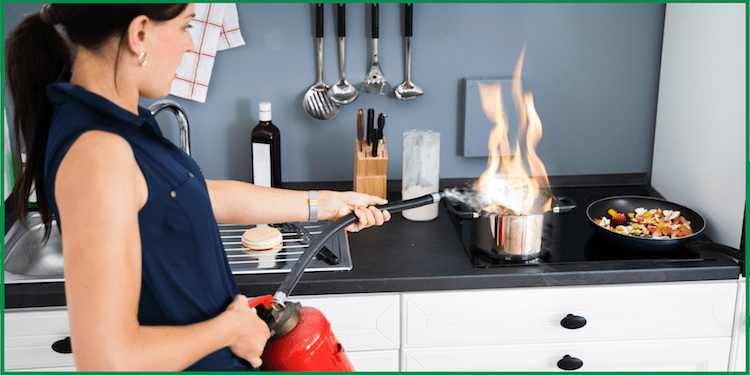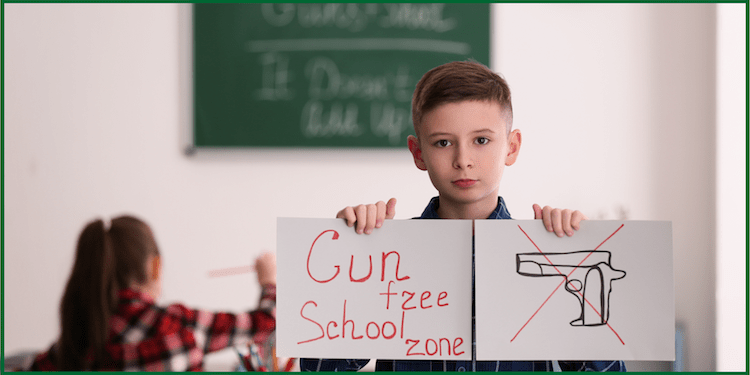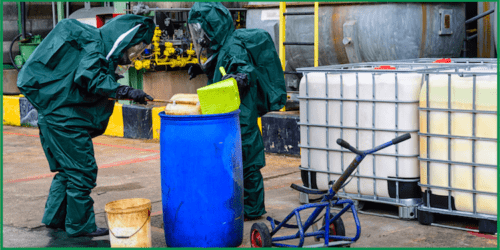How to respond to a fire emergency depends on the fire classes. Fire does not respect anything or anyone; it kills, destroys, injures, and scars; however, we can prevent fires and learn how to deal with a fire that has started.
The safest way to deal with fire is to prevent it from happening, but nonetheless, if a fire has started, we need to ascertain the class of the burning fire so we can know how to respond and fight the fire if trained.
FIRE CLASSES AND APPROPRIATE FIRE EXTINGUISHERS
United States of America fire classes
| CLASSES | EXAMPLES | FIRE EXTINGUISHERS |
| Class A | Solid materials, e.g., wood, paper, and textiles. | A.B.C./powder, water, water mist, foam |
| Class B | Flammable liquids, e.g., petrol, diesel, or oils. | A.B.C./powder, CO2, water mist, clean agent |
| Class C | Electrical devices, e.g., extension cords and cables. | A.B.C./powder, CO2, water mist, clean agent |
| Class D | Metals, e.g., aluminum and titanium. | Powder |
| Class K | Kitchen, grease, and cooking fires, e.g., deep-fat fryer and griddle | Wet chemical, water mist |
European and Commonwealth Nations fire classes
| CLASSES | EXAMPLES | FIRE EXTINGUISHERS |
|---|---|---|
| Class A | Solid materials, e.g., wood, paper, and textiles. | A.B.C./powder, water, water mist, foam |
| Class B | Flammable liquids, e.g., petrol, diesel, or oils. | A.B.C./powder, CO2, water mist, clean agent |
| Class C | Gases, e.g., butane and acetylene. | A.B.C./powder, CO2, water mist, clean agent |
| Class D | fires involving metals, e.g., aluminum and titanium. | Powder |
| Class E | Electrical apparatus, e.g., cables, wires, and extension cords. | A.B.C./powder, CO2, water mist, clean agent |
| Category F | Kitchen, grease, and cooking fires, e.g., deep-fat fryer and griddle | Wet chemical, water mist |
FIRE SAFETY AND PREVENTION
A fire can occur at any time; therefore, we must adopt various measures to prevent a fire in our building.
Careless smoking, using candles and incense, and unattended cooking appliances are significant causes of fatal fires in residential buildings.
These are some of the measures needed to be adopted to prevent fire outbreaks below:
- Ensure all appliances in your areas, such as hot plates, ovens, toasters, mixers, grinders, geezers, and clothing irons, are turned off when not in use.
- Keep storage areas, stairway landings, and other out-of-way locations free of waste paper, empty cartons, dirty rags, and other materials that could fuel a fire.
- Report all fire hazards to the security & fire service.
- Create awareness of using fire-retardant furniture, carpets, curtains, etc.
- Follow good housekeeping practices – because a clean house is a safe house.
- If electrical equipment is not working correctly or gives off an unusual odor, disconnect the equipment and call the electrician.
- Properly replace any electrical cord that is cracked or has a broken connection.
- Protect extension cords from damage. Do not put them across doorways or anywhere they will be stepped on or chafed.
- Do not plug one extension cord into another or more than one extension cord into one outlet.
- Use ashtrays and empty them only when you are sure the ashes, matches, and butts are cold.
- Keep all heat-producing appliances away from the wall and anything that might burn and spread the fire.
- Leave plenty of space for air to circulate equipment that typically gives off heat.
- Prohibit smoking in storage areas of flammable materials.
- Keep walkways, stairwells, and exits free from obstructions at all times.
- Report if you observe/notice damaged fire equipment.
- Do not open the fire hydrant/hose reel water for unnecessary use.
- Do not misuse Fire Extinguishers.
FIRE OUTBREAK AND RESPONSE TECHNIQUES
The first and only activity we should perform during an emergency incident involving a fire should be a total or partial evacuation of the area exposed to the fire, followed by fire suppression activities carried out by internal or external resources or a combination of both.
Heat and toxic smoke from fire build up with surprising speed, quickly blocking escape paths, and this causes victims to die from smoke inhalation.
People get burnt to death in fires, so we should always take fire alarms seriously and exit buildings quickly because it is essential to our survival.
When a fire is discovered, the initial fire stage:
• Activate the nearest fire alarm (if installed)
• Call the Fire Department
• If the fire alarm is not available, notify people in that environment about the fire
emergency by shouting fire! Fire!! Fire!!!
In the case of a small fire:
- If it is safe to do so, use a fire extinguisher
- If the fire is still burning, get out
In the case of a large fire or smoke:
- Notify others
- Activate fire alarm
- Leave the building quickly
Attempt to put out the fire ONLY if:
- The Fire Department has been notified.
- The fire is small and is not spreading to other areas.
- Escaping the site is possible by backing up to the nearest exit.
- The fire extinguisher is in working condition, and train personnel to use it.
Upon being notified about the fire emergency, occupants must:
•Leave the building using the designated escape routes.
•Assemble in a safe open area
•Remain outside until the competent authority announces it is safe to re-enter.
Emergency Fire Response Procedures
In case of a fire or a fire alarm, follow the following procedure. The R.A.C.E. approach is generally an excellent basic action plan.
What is R.A.C.E. Fire Response:
If you discover a fire or smoke condition
R – ‘Rescue’ any person in immediate danger.
A – ‘Alarm’ pull the fire alarm to alert everyone.
C – ‘Confine’ by closing all doors where possible and turning off gas equipment, if possible, on your way out.
E – ‘Evacuate’ Use the nearest stair exit and follow the exit signs.
Do you enjoy this reading? Kindly share with family, friends, and colleagues. Thanks 🙂



